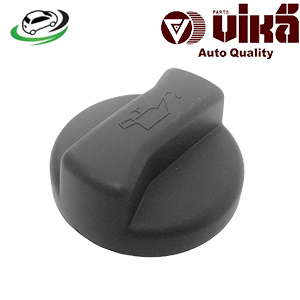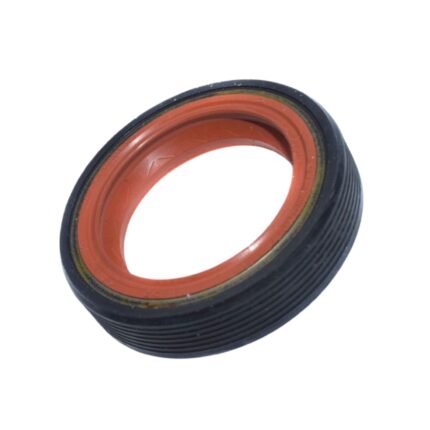Get Oil filter AUDI A3/A4 B5/A4 B6/A4 B7/A6 C5 / VW Golf IV/Caddy II/Passat B5/Polo III/Polo Variant/New Beetle 74115562
The oil filter is a vital component in a vehicle’s engine system, ensuring that the engine oil remains clean and effective. By filtering out contaminants and particles, the oil filter helps maintain engine performance, prolongs engine life, and contributes to overall vehicle reliability. This guide provides an in-depth look at the oil filter, including its function, types, common issues, maintenance, and replacement.
Function of the Oil Filter
The primary function of the oil filter is to remove contaminants from the engine oil, which can include dirt, metal particles, soot, and other debris. The clean oil is essential for lubricating the engine’s moving parts and ensuring smooth operation. Key functions include:
- Contaminant Removal: The oil filter traps and removes impurities from the oil, preventing them from circulating through the engine and causing wear or damage.
- Maintaining Oil Cleanliness: By keeping the oil clean, the filter helps ensure that the engine oil continues to lubricate effectively, reducing friction and wear on engine components.
- Preventing Engine Damage: Clean oil reduces the risk of engine damage caused by abrasive particles or contaminants, which can lead to costly repairs or engine failure.
- Supporting Engine Efficiency: Effective filtration helps maintain optimal engine performance and fuel efficiency by ensuring that the oil functions properly.
Types of Oil Filters
Oil filters come in various types, each designed for specific applications and engine requirements:
- Mechanical Oil Filters:
- Description: Use a physical filter element (such as paper or synthetic materials) to trap contaminants.
- Applications: Commonly used in most modern vehicles.
- Pros: Effective at filtering out a wide range of particles, generally affordable.
- Cons: May need to be replaced regularly.
- Centrifugal Oil Filters:
- Description: Use centrifugal force to separate contaminants from the oil.
- Applications: Often used in high-performance or heavy-duty applications.
- Pros: Can be more effective at removing larger particles.
- Cons: Typically more complex and expensive.
- Magnetic Oil Filters:
- Description: Use magnets to attract and capture metal particles in the oil.
- Applications: Can be used in conjunction with standard filters for added protection.
- Pros: Effective at capturing metal debris.
- Cons: Generally used as a supplementary filtration method.
- Bypass Oil Filters:
- Description: Work in conjunction with the primary oil filter, filtering a portion of the oil at a higher level of filtration.
- Applications: Used in high-performance engines or applications requiring extra filtration.
- Pros: Provides additional filtration for better oil cleanliness.
- Cons: More complex and can be more expensive.
Importance of the Oil Filter
The oil filter is crucial for several reasons:
- Engine Protection: By removing contaminants from the oil, the filter helps protect engine components from wear and damage, extending the engine’s lifespan.
- Optimal Performance: Clean oil ensures that the engine operates smoothly and efficiently, providing better performance and fuel economy.
- Prevention of Sludge Build-Up: Effective filtration prevents the accumulation of sludge and varnish, which can hinder engine performance and lead to costly repairs.
- Reducing Emissions: Clean oil helps the engine run more efficiently, which can contribute to lower emissions and improved environmental performance.
Common Issues with Oil Filters
Several issues can affect the performance and effectiveness of oil filters:
- Clogging: Over time, the filter can become clogged with contaminants, reducing its ability to filter effectively and potentially leading to lower oil pressure or engine damage.
- Bypass Valve Failure: Most oil filters have a bypass valve that allows oil to flow through the filter if it becomes clogged. A faulty bypass valve can lead to unfiltered oil circulating through the engine.
- Leaks: Improper installation or a damaged gasket can cause oil leaks around the filter, leading to a loss of oil and potential engine damage.
- Incorrect Filter Type: Using an incorrect or incompatible oil filter can result in poor filtration, reduced engine protection, or other issues.
Signs of a Faulty Oil Filter
Identifying signs of a faulty oil filter can help prevent more severe engine problems:
- Oil Pressure Warning Light: If the oil pressure warning light on the dashboard comes on, it may indicate a problem with the oil filter or oil pressure.
- Oil Leaks: Oil spots or puddles under the vehicle may suggest a leaking oil filter or improper installation.
- Reduced Engine Performance: Symptoms like rough idling, decreased power, or unusual engine noises can indicate problems with the oil filter or oil quality.
- Dirty or Sludgy Oil: If the engine oil appears dirty or sludgy, it may be a sign that the oil filter is not effectively removing contaminants.
Maintenance and Prevention
Proper maintenance of the oil filter is essential for ensuring its effectiveness and prolonging engine life:
- Regular Replacement: Follow the vehicle manufacturer’s recommendations for oil filter replacement intervals, typically every 3,000 to 7,500 miles or with every oil change.
- Check for Leaks: Inspect the oil filter area for leaks or signs of damage during routine maintenance.
- Use the Correct Filter: Ensure that you use the correct oil filter for your vehicle’s make and model to ensure proper fit and function.
- Proper Installation: Install the oil filter correctly, following the manufacturer’s instructions to avoid leaks and ensure a secure fit.
Replacement of the Oil Filter
Replacing the oil filter is a straightforward task that can be performed with basic tools:
- Preparation:
- Tools and Materials: Gather a new oil filter, an oil filter wrench, a drain pan, and a funnel.
- Safety Measures: Ensure the engine is cool and the vehicle is securely supported on jack stands.
- Drain the Oil:
- Locate Drain Plug: Find the oil drain plug on the underside of the engine.
- Drain Oil: Place the drain pan under the plug, remove the plug, and allow the old oil to drain completely.
- Remove the Old Filter:
- Locate the Filter: Find the oil filter, which is usually accessible from beneath the vehicle.
- Remove the Filter: Use an oil filter wrench to loosen and remove the old filter. Be prepared for some oil to spill out.
- Install the New Filter:
- Prepare the New Filter: Apply a small amount of oil to the gasket on the new filter to ensure a proper seal.
- Install the Filter: Screw the new filter onto the filter mount, tightening it by hand until secure.
- Refill with Oil:
- Replace Drain Plug: Reinstall and tighten the oil drain plug.
- Add New Oil: Use a funnel to pour the new oil into the engine through the oil filler neck. Refer to the vehicle’s manual for the correct oil type and quantity.
- Check Oil Level:
- Inspect: After adding the new oil, check the oil level using the dipstick to ensure it is at the correct level.
- Test Drive:
- Check for Leaks: Start the engine and let it run for a few minutes, checking for any leaks around the oil filter and drain plug.
- Monitor Performance: Drive the vehicle and monitor the engine performance, ensuring there are no unusual noises or issues.
Follow us on Facebook for more parts.



